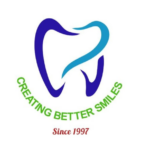ACTIVITY: Following your procedure, we suggest you consider relaxing or at least limiting your activity as much as possible for the remainder of the day. Avoid strenuous activity and aerobic exercise for the next 3 days.
DISCOMFORT: Some discomfort may be present when the anesthesia wears off.
You have been given a prescription for moderate discomfort. Please take this as directed for 1-2 days. This drug will greatly decrease the possibility of post-surgical swelling and pain and has been shown to accelerate healing.
After the first few days, 2 Tylenol, or 2 Advil taken every 4-6 hours as needed, should keep you comfortable. Should intense discomfort occur at any time after the surgery, please contact the office.
INFECTION: If you have been given an antibiotic please continue taking it as directed until all of the tablets have been taken. If you notice that after a few days, pain or swelling are increasing, or that you are experiencing an elevated temperature, please call the doctor.
SWELLING: It is normal for some swelling to occur after surgery, particularly in the lower jaw. To minimize swelling after surgery, apply an ice bag wrapped in a light towel or handkerchief to the outside of your face over the operated area. This should be left on your face for about 10 minutes, then removed for 20 minutes, or alternated from side-to-side, between operated areas, for 12-24 hours after surgery. The use of both ice and the analgesic as described above will reduce the amount and duration of facial swelling. Please do not be concerned if mild to moderate swelling continues to increase for up to 4 days following your procedure.
BLEEDING: It is common to have slight bleeding for a few hours following surgery. Try to avoid repeatedly spitting or rinsing during the first 24 hours after surgery as this will encourage bleeding. If bleeding persists, rinse your mouth or remove blood by wiping with a clean tissue to identify the location of the bleeding site, and then apply a tea bag to the area with firm but gentle continuous pressure for 15-20 minutes. Let yourself rest for 15 minutes then repeat the application of the tea bag for a second time if you still have slight bleeding. If excessive bleeding continues, please call our office. Remember, most of the blood you may see in your mouth is actually a little bit of blood mixed with a lot of saliva – blood is a very strong “dye” and a little bit of blood will color your saliva dramatically.
ORAL HYGIENE: Brushing and oral hygiene procedures should be done as usual in all untreated areas. In areas covered by periodontal dressing, brush only the chewing surfaces of teeth. Avoid dental flossing in operated areas during the first week following surgery. Also avoid the use of water irrigation devices such as Water-piks or electric toothbrushes in the operated areas until instructed to resume. The exposed operated areas should be gently swabbed with a Q-tip (cotton tipped applicator) saturated with the prescribed mouthrinse (Chlorhexidine) as a last oral hygiene procedure at bedtime and again in the morning, after eating and drinking. If a chlorhexidine mouthrinse has been prescribed, use it according to the directions on the bottle starting the day after surgery. Avoid eating, drinking, and brushing for 1 hour beforehand and 1 hour afterwards.
EATING AND DRINKING: Do not try to eat until all anesthesia (numbness) has worn off. High protein foods and liquids are desirable for 3-5 days following surgery. Semi-solid foods may be eaten as long as this may be done comfortably. Eggs, custard, yogurt, pasta, steamed vegetables, casseroles, cooked cereals are some things that you might consider eating during the first few days following your surgery. Avoid spicy, salty, acidic, very hot or very cold foods or liquids. Also, avoid hard foods: toast crust, nuts, chips or other crunchy or fibrous foods such as raw carrots that may become caught between your teeth or traumatize exposed operated tissues. Please refrain from drinking alcoholic beverages on the day of surgery.
USE OF REMOVALBLE DENTAL APPLIANCES: If you normally wear a removable appliance your doctor will instruct you in its use.
DRESSING CARE: If a surgical dressing has been placed and small pieces of the dressing break off, do not be concerned. If large portions of the dressing are displaced or lost, and discomfort is experienced, please contact our office. If the dressing should fall off after 4 days, and you are comfortable, replacement of the dressing is unnecessary.
